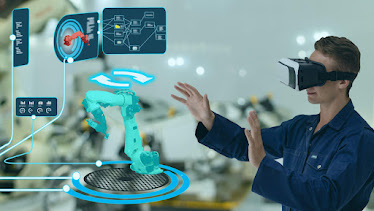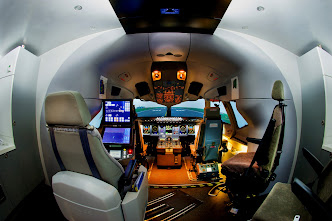Employee training challenges that can be solved by VR Training Solutions
It is a well-known fact that productive and highly competent employees are an asset to any organization. In fact, if there’s one aspect that is shared by successful organizations around the globe, it is the fact that their workforce is well-trained and highly capable. Hence, it is of utmost importance to take employee training seriously. If you want your business to thrive and grow then you need to ensure that your employees undergo regular training. However, employee training is not as easy as it sounds. And this is exactly where VR Training solutions can help organizations.
Common Employee Training issues that can be solved by VR Training Solutions
The field of technology is constantly evolving. And hence,
you need to ensure that your employees have the right skills to address modern
challenges and come up with innovative solutions to problems. And this can be
done by stepping up the training process as well. One of the most practical
ways of enhancing employee training is to make use of VR training
solutions.
VR platforms are capable of providing an environment free
from any distractions for employees. It gives them a safe space for learning
together without any collateral damage in the process. For instance, you can
make use of a truck
driving simulator for training your fleet drivers. They can make
mistakes and learn from them without the fear of causing any actual harm to
others on the road or the vehicles. Similarly, the following are some other
employee training challenges that can be solved with the help of VR
training:
1.
Lack
of Hands-On Training
For many people, practice-based training works the best.
Several studies have shown that practicing a skill exactly how you would carry
it out during a job helps in retaining it much better than just reading about
it. Especially when it comes to highly skilled jobs such as surgery training or
firefighter training, learning on the job can be quite risky and can even be
fatal. However, at the same time, just theoretical knowledge would not be as
helpful. This gap created by the lack of hands-on training can be fulfilled with
the help of VR Training.
2.
Not
Meeting Individual Employees’ needs
Generic courses sound good as they seem cost-effective. They
are advertised as a one-size-fits-all solution to training. However, anybody
who knows even a little about learning new information or teaching new
information must know that every individual learner has a different style. If
your employees don’t feel that the course directly benefits them, they are
likely to lose interest. Your organization will lose both time and money and your
employees would have retained nothing new. VR training can be highly
personalized and allows people to learn at their own pace.
3.
Absence
of Comprehensive Evaluation
Tangible reports about the effectiveness of a training
program are a critical part of any training course or development program.
These reports help you in making future decisions. They also provide insight
into each employee's learning experience. However, measuring effectiveness can
be quite difficult with traditional training programs. This can easily be
solved by VR Training solutions. For instance, if your business runs or rents
buses, you can make use of a bus
driving simulator for measuring the performance of a bus driver you
plan to hire or to measure the improvement after you’ve provided training to
your drivers.
Conclusion
Traditional training methods leave a lot to be desired.
There are gaps that might be difficult to notice from an outsider's
perspective. Moreover, many people don’t realize that better alternatives are
available. Hence, it’s high time to make use of VR
training solutions for enhancing employee training
programs.



Comments
Post a Comment